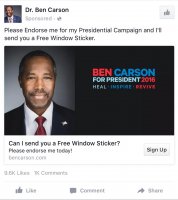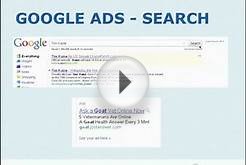A screenshot of the Priorities USA YouTube page, containing several political ads.
There’s no doubt that television commercials are the juggernauts of campaign advertising. Campaigns and super PACs will spend hundreds of millions on commercials designed to sway voters while they watch the news, The Price is Right or even football and baseball.
However, as Americans continue to migrate over to the web as a primary source of news and entertainment, so are political campaigns. So much so, that Google, Facebook and Twitter all have pages dedicated to answering questions and soliciting political campaigns.
But as candidates and their outreach teams transition to the digital realm, it appears that disclosure and transparency are being left behind — potentially leaving the American public in the dark.
Low-cost entry, high reach, harder to track
The ads are also becoming popular because Internet companies claim you can reach many more people at a lower cost. For instance, on Facebook’s page, they point to a case study of Texas Sen. John Cornyn, R, where his campaign was able to reach a million voters for just 21 cents each. That means the campaign spent about $210, 000; compare that to a television ad campaign which can cost in the millions. In another section on the political campaign page, Facebook states for $1, candidates could buy two pieces of direct mail, or they could target 200 voters on Facebook.
The bigger challenge could become whether voters can tell who is targeting them with these ads.
 Facebook advertisement placed by Ben Carson during the 2016 campaign
Facebook advertisement placed by Ben Carson during the 2016 campaign
When it comes to television commercials, you can track who's behind the advertisements in two ways. First, committees present them on their campaign finance reports and super PAC filings. In addition, television and radio stations are required to file information about political advertisements with the Federal Communications Commission, including who placed the ad and the amount of money. They also are required to have a disclaimer that discloses who paid for it.
Internet campaign ads, defined by the Federal Election Commission as “communications placed for a fee on another person’s website, ” can only be tracked on those campaign finance reports. Early in the cycle, we’re seeing candidates and committees sometimes break those down by line items where we can see where those ads were placed. In other cases, the candidate or super PAC just lists who they have hired to place those ads. And because the rules on online ads are so lax, a disclaimer on who's behind the ads wouldn't be necessary for viral videos placed on YouTube or other content distributed on services like social media.
And it becomes even murkier with "issue ads, " ads that do not explicitly advocate for or against a particular candidate. Under the current reporting regime, spending on online issue ads is only disclosed in a political committee's disbursements, sometimes filed weeks or months after the fact and lacking information about the candidate and race targeted and type of expenditure. Other groups, like "social welfare organizations, " usually don't have to disclose this spending to the FEC at all. And they never require a disclaimer on who or what is running them.












